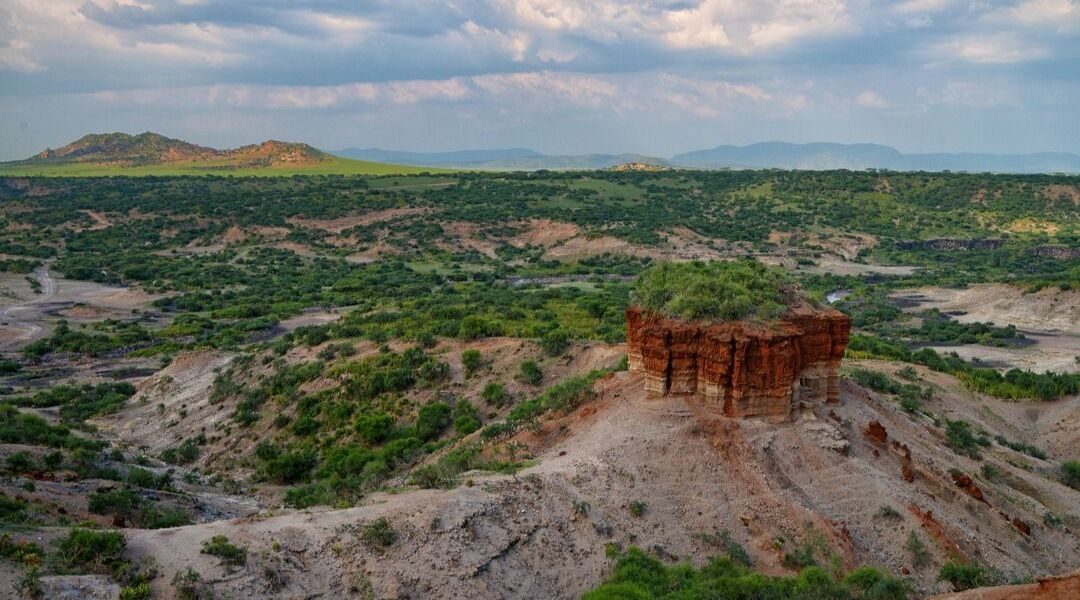In Africa lies the famed ‘Cradle of Mankind’, the oldest evidence of human existence. This area is known as Olduvai Gorge, a deep ravine located in between the Ngorongoro Maasai lands and the Serengeti wildlife plains in present-day Tanzania. It was here that Kenyan paleoanthropologist and archaeologist, Louis Leakey, discovered the skull of the Nutcracker Man, which dates back to almost two million years old.
Also known as Oldupai, the Masai word for the sisal plant that grows widely in the surrounding area, the Olduvai Gorge is proof that mankind traces its roots to these magnificent East African plains. Archaeologists have dug up the oldest fossilized remains of our ancestors here, including skulls and bones that date to the Homo Habilis era. The site has proven more about early human evolution than any other dig site in the world today, so a visit here is to truly connect with the roots of your own family tree. If you are traveling through the region, you can combine a trip to Olduvai with a visit to the mysterious Shifting Sands, a volcanic ash dune that moves across the desert at a rate of approximately 17 meters every year.
History and Discoveries
Back in 1911, two German researchers looking for butterflies stumbled upon the fossil remains of a three-toed horse in Olduvai Gorge, which in turn generated interest in the site. During the 1930s, archaeologists Louis and Mary Leakey embarked on a series of extensive excavations at Olduvai Gorge; a dig that spanned over five decades and resulted in several remarkable discoveries that changed the world’s understanding of our origins and ultimately concluding that the human race originates exclusively from Africa.
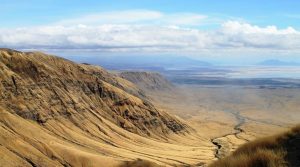
In addition to discovering the Nutcracker Man, the name given to the remains of a Paranthropus boisei male, the Leakeys also discovered a series of preserved hominid footprints at Laetoli, a site located some 45 kilometers south of the gorge itself. Olduvai Gorge is situated in the Great African Rift Valley with its main Beds located in a lake basin sixteen miles wide. The rocks under this basin date as far back as over five million years old! One of the beds dating back thousands of years contained the complete skeleton of a Homo Sapien.
But it’s not just humans as the site turned up some pretty mindblowing discoveries from the fossils of wildlife. Strange creatures never seen by modern men once roamed these lands here – hippos with eyes on stalks, dwarf elephants, giraffes with horns, and saber-toothed cats that lived around the lake. Sites at Olduvai Gorge have also yielded a vast quantity of stone tools and curious plant fossils, making the area remain important for research.
Visiting Olduvai Gorge
Teams of palaeoanthropologists continue to work at Olduvai Gorge and you can schedule a visit to the excavation sites. However, you will not be allowed in and can only look around, but the experience is still profoundly educational.
Getting to the gorge
One of the best ways to visit Olduvai is if you include it as part of a northern circuit Tanzania safari. This itinerary usually involves visiting the gorge en route between the Ngorongoro Crater and the Serengeti, which is well worth the short detour since it provides a brief break from the animals. It’s difficult and expensive to visit Olduvai without a safari because you would still be required to pay the Ngorongoro Conservation Area permit, as well as a 4WD vehicle with a driver.
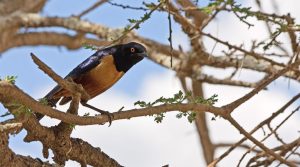
With a safari, you can start the northern circuit trail in the Ngorongoro Crater floor in the morning then take a short ride to Olduvai in the afternoon. You’ll then continue into the Serengeti before sunset, just as the predators start to emerge from their mid-afternoon slumber.
Visiting the Olduvai Gorge museum
Some of the things you’ll read about Olduvai Gorge can seem somewhat incredulous, but it all starts to make sense when you get to the museum. The ancient artifacts, drawings, and photographs you’ll see there bear witness to the life of our human ancestors, some of which are 2.1 million years old! The museum is carefully planned out across different rooms that guide the story through human evolution. At first glance, some of the artifacts don’t look impressive but they take on a whole new meaning when you understand their history.
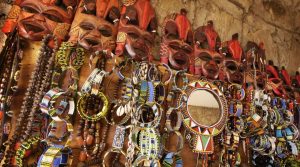
All the museum displays are in English and tours are conducted by local academic guides. Their stories contribute immensely to the written information, making it a more enriching educational experience. Among the exhibits, you will see the fascinating replica of Lucy, the oldest skeleton ever discovered, as well as the Laetoli footprints, where you can walk in the footprints of early man. You also get to piece together how the many findings at the gorge have changed our understanding of human evolution.
Gazing upon the spellbinding gorge
The area boasts a beautiful view and is an ideal place to reflect on life as you may know it. Even though you’re not allowed inside the excavation sites, you can still explore the excavation area. You’ll see hard it was to work here as every piece of earth had to be dug out by hand, piece by piece. When walking around Olduvai, it’s common to encounter giraffes, wildebeests, and even Masai men herding their goats.
Visiting the Shifting Sands
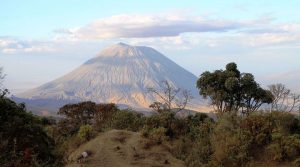
North of Olduvai Gorge lies to the Shifting Sands, a crescent-shaped dune of fine black ash moving steadily across the plain under the force of the region’s unidirectional wind. The Maasai believe this ash to be from the sacred Ol Doinyo Lengai mountain, whose name translates to the Mountain of God. The sands are rich in iron and highly magnetized so that they stick together when thrown in the air. This phenomenon makes for some pretty interesting photographic opportunities.
How long should you schedule for the visit to Olduvai Gorge?
If you want to have at least a basic tour of Olduvai, consider allowing at least two hours. Of course, this time is nowhere near enough to be able to grasp the history of human evolution and the countless hominid remains that tell a story of over two million years of human history, connecting homo habilis all the way to Neanderthal man.
Olduvai Gorge is a stunning place to reflect on life and connect with the roots of mankind. Tours are available year-round, so if Tanzanian safari is on your bucket list this year, consider throwing in this amazing learning opportunity with the rest of your safari adventure. It is absolutely worth it!

